My wood stove smokes into living area
I have a 1 year old freestanding stove (Quadra Fire 5700) that emits the smell of combustion (smoke) into the living area during the burn cycle. When it is loaded with wood it normally takes about 15-30 minutes or more for it to reach maximum operating temp and within another 15 minutes (after it falls back to operating tem) I start to notice a distinct smell of smoke.
The smoke smell lasts for another 30-60 minutes and the flue temp is in the 250-350 range. Have any others experienced smoke smell from their wood stove during normal operation? My flue is fully lined from the stove outlet to the top of chimney with 6" stainless steel. The draft in the flue has been measured at much above the minimum requirement. An air monitoring meter from Oregon Scientific shows the presence of distinct air pollution from this stove during this time. Are there any comments or suggestions? Thanks.
Comments (30)
baldgranny
16 years agoIs the stove air tight? Have you cleaned the flue this year? I have a Tulikivi and I have a noticeable smell of burning wood in the house, which I really like. I also have a carbon monoxide tester in the house so I know I don't have a carbon monoxide problem. But my stove isn't air tight. Can you see any smoke? I'm assuming your smoke alarm doesn't go off.
It may just be your stove isn't air tight and you are blessed with the pleasant perfume of a wood fire. If your house isn't air tight, I doubt it is anything to worry about.
surfer
Original Author16 years agoThanks for the reply. The stove is intended to be airtight, but there is leakage coming from somewhere. The only trouble with smelling smoke is that it means you have constant indoor pollution, which isn't good, even if you like that smell.
We also have a carbon monoxide detector and it doesn't show any CO, and the smoke alarm doesn't go off and indicate a problem either. We've noticed that the stove has done this since almost new. The top of the flue looks good. I must look at the chimney liner, but it was relined with 6" stainless pipe last year.
Just curious if others have experienced this with a supposed air tight stove.
Related Professionals
Brentwood Los Angeles Solar Energy Systems · Brockton Solar Energy Systems · Richfield Solar Energy Systems · Saratoga Springs Solar Energy Systems · Lake Morton-Berrydale Home Builders · Casa de Oro-Mount Helix Home Builders · Dinuba Home Builders · Grover Beach Home Builders · Manassas Home Builders · Montgomery County Home Builders · Sun Valley Home Builders · Kearns Home Builders · Manchester Roofing & Gutters · Ojus Roofing & Gutters · Colonia Roofing & Gutterssurfer
Original Author16 years agoThanks Al. I have tried using the technique of using a flashlight in a dark room, but can't really see visible signs of smoke. You can smell it but not see it. I'm wondering if the joint where the stove pipe, which comes out vertically from the top of stove and meets the flue pipe could be leaking slightly.
When the stove was installed there was a sealant used in that joint that appears to have chipped out in a couple of spots on the back side which is close to the fireplace steel heatilator lining. The stove sits partially inside a large fireplace.
There is no damper in the flue pipe, only control of the stove air intake. I'll have to try and reseal this. My concern is that the stove could be leaking internally such as at the flue pipe internal joint which can't be seen due to its double wall construction and was wondering if any other users have had any similar problems. The smoking is noticed primarily when a large fire is in the firebox. Wind or calm doesn't make any difference.
nhyankee
16 years agoSurfer 250-300 degrees flue temp is way too low to be when the stove is at operating temp. I think you need to run the stove much hotter and aim for at least 400-450 degree flue temps. I'm thinking that the fire is making a lot of smoke and/or wood gas/water vapor and with such a low flue temp you'd have a weaker draft than if it was hotter. That 5700 holds a lot of wood and if you have it pretty full then the above is probably that much more the case.
How soon do you turn down the start-up air control and are you seeing strong secondary flames when you turn down? Is your liner insulated?
peterbog
16 years agoConcur with nhyankee. You need to have enough heat being generated to heat the chimney as well as the stove. Warm air rises and if it is cooling in the chimney it can kind of cause an air inversion that traps smoke and it will seek a place to go other than out the top of the chimney. The metal chimney will both heat and cool lots faster than a masonry one so try a little hotter fire and see if that helps.
(In my sunroom I have a cheap box stove that I can almost feed through the cracks...but once we get it fired and the masonry chimney warmed up can close the damper all the way and rarely get smoke. The cracks in fact are sucking air in for all they are worth even when the damper is closed. I've in the past had air tight stoves and always made sure I had the damper open for a while before opening the door to feed or would get a belch of smoke out the door. I don't know the specific stove you have, but you may be getting a litte smoke out from when you feed it that you don't notice until you leave the room and then come back in....)
surfer
Original Author16 years agoThanks for the replies. I was wondering if I was the only one with such a problem with this stove or if others have noticed it.
Concerning flue temp. While my external flue temp measures about 250-300 with a magnetic base Cordon thermometer the interior flue temp using a standard flue thermometer through a 1/4-5/16" flue access hole measures 600 degrees. I've also measured the draft at .13 inches of water using a standard draft meter from a Bacharach combustion kit. That's a substantial draft that is well above the minimum. BTW I keep the access hole plugged.
I like the 5700. It has a big firebox and holds good sized logs and will easily hold a fire over night. Yet I don't want a stove that pollutes our home. An airtight stove shouldn't be putting combustion byproducts into the home. Some may like the smell of a woodburning fire but it isn't good for the well being of occupants.
We notice the smell about 30-45 minutes after it's fully loaded and has been run up to a normal operating temperature, and then banked down to run mode such as near bedtime. It's not severe but it is definitely noticeable. If it is being run with a partial load we don't normally notice any smell.
Please let me know if there are anymore thoughts on this.
bushleague
16 years agoNice looking stove, I found it on a couple of sites. It looks similar to our Dovre which btw is burning its 17th year. The specs didn't say whether or not it had a catalytic combustor?
I tend to run about 1100 degrees F. There is a remote chance of a restriction in the pipe (It'll be close to the chimney cap). Any way you can run a brush down it? Also does wind direction have anything to do with the smoke? The reason I ask is that when we get a NW wind and I have the draft in the side door squeezed down too far, the stove will back puff.koolmart
16 years agoMaybe your gaskets need replacing? I did a poor job on my main top gasket and or door gasket and there is a noticable smell when burning softwood at low temps. Have to wait for warmer weather to take it apart and do again or, egads, call a pro.
surfer
Original Author15 years agokoolmart...you referred to the main top gasket. Is that something specific to this stove as I'm not familiar with it. Are you referring generically to the flue connection? The door gasket seems tight.
Bushleague.. it's a non catalytic stove. The pipe is good and draft is strong.
Still smokes. I should have forced the issue with the dealer and or manufacturer because it is an expensive stove and it should not be smoking.
jim249
15 years agoI also have a Quadrafire stove that does the same thing. I have tried everything I can think of and checked the web for more ideas. Once the stove is fully fired and hot I can carefully start to smell around the top of the stove and can smell the acrid burn smell. It seems to come from under the step top opening on the top of the stove. I have replaced the flue cap with a wind directional cap, resealed the flue pipe on the top of the stove, added in an extentsion piece of pipe that goes deeper into the top of the stove. Still the same thing! I am starting to think I have a section of bad flue pipe or a bad stove. There are breather openings in the base of the flue pipe at the top of the stove, so the smell might be coming from there. The only other thing I have noticed is that the insulation between the inner and outer wall of the flue pipe at the top of the house is black with soot. Bad flue pipe? Frustrated!
jim249
15 years agoOne other thing I failed to mention in the above posting is that during the heating up of the stove it starts making a string of ticking noises which may last for as long as 15 minutes or until the stove is up to temp. It does the same thing when cooling down. A bad weld? A tick here and there I would consider normal with the heating of the steel. Do other stoves do the same thing?
surfer
Original Author15 years agoSorry for the delay in replying. Your description sounds identical to mine. Even the location and source being at the step top gap. I also get the ticking noises and sometimes a heavy bang while it heats up. My suspicion was always of a bad weld at the top and side plates that possibly separates slightly under heat and allows the stove to leak. It is somewhat intermittent in that the smell is not always as noticeable. It is frustrating because these are not inexpensive stoves.
markio
15 years agoI have an Acorn Aarrow stove and am in the process of dismantling it to try and prevent it from smelling when in operation. I get no visible smoke just an acrid smell which can't be right. I'm checking the joints of the blanking plate, the flue to the stove and the flue to the register plate in the chimney. The stiove burns well with a very good draw but when it's burning at full temperature it smells and this can't be right. I also have a CO meter and it shows no problem but as you say the smell in the house must be polution.
If you find what is causing your problem please let me know.
Thanks
naum62
15 years agoI was searching about problems w/the 5700 and came across this forum. I too have the same problem. I think the welds leak at the top sides of the fire box. I always smell it when I try to choke the fire down for a long burn. It comes out at the vent on the top of the stove. I bought an outside air kit and used metal tape on all the gaps under the stove on the air channel. It helped alot but not 100%
My real problem with the stove is that the ceramic baffles keeps cracking. I'm on my 3rd one. The only thing I can figure is that the air tubes have bent slightly downward and that is enough for the weight of the board and blanket to flex, and with all the heating and cooling, for the board to crack. Anyone with this problem?
Mine also "ticks" alot. I'm just about ready to call Country Comfort again about the board and I came across this post. They have been really nice so far. I just don't want them thinking I am being a pain or am doing something wrong.
surfer
Original Author15 years agomarkio....I used a consumer level Oregon Scientific air quality meter (AR112-C) that I bought on eBay specifically to see what it would indicate. As I said earlier when I could smell the smoke the air quality reading near the stove was in the yellow range. The meter supposedly looks at VOCs volatile organic compounds not CO. It reads as relative not quantifiable levels. I'll let you know if the smoke problem is ever fixed.
naum62...sounds like you have the same problem. I had one ceramic board crack and go bad. The smoking persists under certain burn conditions. If you are from s.central PA we may have bought the stove at the same place.
When this problem first presented itself I felt it had to be a bad seam. I removed the tubes and the baffle board and took photos of the upper inside of the stove seam where the top plate meets the side and rear plates. The seam on the left side appears to me as having a slight gap and not the tight seam that exists on the right side. Copy and paste these links. Sorry I couldn't get clickable multiple hyper links to work on this message.
http://i603.photobucket.com/albums/tt112/photovar/stove-left-rear.jpg
http://i603.photobucket.com/albums/tt112/photovar/stove-top-rear.jpg
carolwalberg_hotmail_com
13 years agoLast year I didn't notice a problem and nothing has changed. I only get smoke when there is wind from a certain direction (S/SW) otherwise the stove works great.
I had a professional come out and he did a pressure test. It showed a negative pressure in the house during the S/SW wind. If I open a door on that side of the house the pressure equalizes but I can't leave the door open in winter. Kind of defeats the purpose. My CO detector does go off.Blogjg_gmail_com
13 years agoYou may have to put in a smoke guard, which actually reduces the size of the door/opening of your firebox. There's a formula that you can use that basically gives a rough number of the size chimny pipe you need. sq inches of door opening x 5% = chimney pipe diameter. If you're getting smoke-back, it sounds like there's a fluctuation in draft somewhere in the firebox or the door opening isn't sized for the chimney. As a last reort, you can add a 2 inch wide piece of steel to the upper inside of the door, which will reduce the door opening. I've worked as a chimney sweep for almost 30 years and if it's leaking, it's either in a metal to metal contact joint somewhere that needs sealing, or it's a draft problem that can fixed with the 2 inch smoke guard. Clean the chimney, make sure there's no obstructions and then move on to the fancier solutions.
blevinmagic_yahoo_com
13 years agoOur house is FULL of smoke all day!! The bottom part of the outside chimney is frozen solid so the air isnt moving correctly...I can hardly breath!1 What is the problem and how do we fix it, we are dying!!
lynnisse
13 years agoCarol Walberg(carolwalberg@hotmail.com) is onto it. it's probably not your stove. more likely, your house is too air tight, and the pressure in the room is too negative for the stove to overcome. some air has to come in from somewhere for there to be any air to go up your chimney. and there has to be more pressure in the room than there is outside. operating the stove hotter may solve the problem, but you may have a number of reasons for not wanting to operate it that hot. in that case, you will have no choice but to let some outside air in from somewhere. the trick is to control it well enough so that the stove is still an efficient heater. check this link for some hints: http://www.thechimneysweep.ca/2stackeffect.html
accindi_comcast_net
12 years agoOur wood stove is a home herald 1910 beautiful stove burned for 7years now needs to be sealed around all sides some pieces have fallen out leaving gaps..how and what do i need to fix.
Mara54
11 years agoWe have an acrid smoke smell in our house for the last few weeks. We did not have the chimney cleaned last year. When we put wood in the stove lately, the smoke fills the room. My husband took the stove pipe out and didn't see anything wrong. Would a creosote log work for us?

SouthernChimney
10 years agoI would suggest you hire a local chimney sweep or wood stove serviceman to look over your system. If they know what they are doing they will be able to diagnose your problem. From my experience, here are a few possible causes of your problem. New wood stoves are so efficient that not much heat goes up the flue, for this reason creating a draft is more difficult than with a fireplace or an old stove. Wood MUST be very seasoned, split small and arranged in stove to allow maximum air circulation. Large logs or unseasoned wood will always cause smoke. You mentioned a stainless liner, is it wrapped in the required insulation? This is one step of stove installation that is often left off but very important. You also should make sure that no venting appliances are running until a good draft is created. Clothes dryers, gas furnaces, kitchen/bathroom fans all compete for air with your stove. You can read more about issues like this in the link provided.
As for the "tinking" sound. This is common on Cast Iron Wood Stoves. Especially the Quadrafire brand. Cheap cast iron from China is cheaply assembled with screws and furnace cement. There is no welds on these stoves. The Cast iron expands and contracts and the noise will just get worse over the years.
Hope this answers your questions!Here is a link that might be useful: Wood Stove Info
Handy Bruce's Home Services LLC
8 years agoA wood stove can smoke extremely while lighting a fire before there is a good draft up the chimney but also if the house is tight and a fan or fans come on drawing air down the chimney and out into the room. The return air from a furnace is likely the biggest fan and may have the greatest effect.
jim249
8 years agoI left a couple of comments above several years ago about my Quadrafire letting smoke into my room. It turns out that it was too much ash in the firebox. It needs to be cleaned out after two days of burning. On the third day is when I start to notice the smoke smell. Too much ash cuts down on the air circulation in the firebox. Where the source of the smell is coming from the stove, I don't know. I still get a bit of a smell at times, but I am sure it has to do with room pressures or outside winds.
Lazy Lobo
7 years agoWe have a brand new Quadrafire 5100 insert that we just tried using for the first time tonight. Can't leave the door open long enough to get the fire going without the whole room filling with smoke. My husband was finally able to get it going a bit, and when the door is opened it burns brighter...like it needs more air. But door open = smoke in the room (see pic with the door cracked a tiny bit)
It's like there are two probs: smoke isn't drawing up the chimney and fire isn't getting enough air. Any ideas? I'm going to call the distributer we bought it from tomorrow.
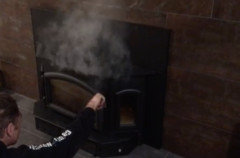
armoured
7 years agoIf you just got it installed, definitely contact distributor. They should have done a test firing and shown you how to get it going. While it may be as simple as needing to let a bit more air in the house (cracking a window) when lighting, if new, it needs to be confirmed it's working correctly and safely.
jstrawn2
7 years agoI have a 30' tall chimney and my wood stove is connected to the chimney with double-walled pipe through a terra cotta thimble. I have no stainless steel liner in my chimney to reduce the diameter and create better airflow. That being said--before I start a fire I go outside and open the clean-out door to the chimney. I use a newspaper torch to pre-heat the chimney before lighting the fire in the wood stove. Before I figured this out my stove would smoke like yours every time I tried to light it. Now, if I preheat the chimney, it never smokes up the room. I do get a little smoke leaking out when I load the stove because it doesn't draw so well (cracking a nearby window when reloading helps a bit). Also, if I do let the temperature drop below 300 F I do notice a slight smokey smell. So, until I have the $1000 plus dollars to get a SS insulated liner installed I just do the tweaks needed--preheat the chimney before lighting, run it at 350+ degrees, and crack a window when reloading. It all takes a bit of trial and error,... Good Luck!!! -J
jrb451
7 years agoI had to chuckle a bit when I saw your photo lazy lobo. I've had my stove do the exact same thing a couple of times before. Usually on the first fire of the season when it's pretty cold out. Takes awhile to warm the chimney and over come the temperature inversion.
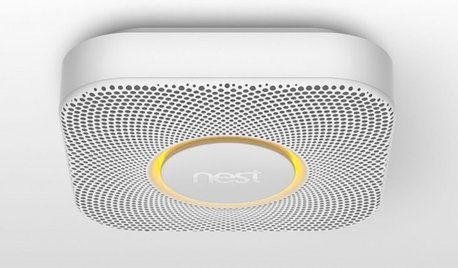
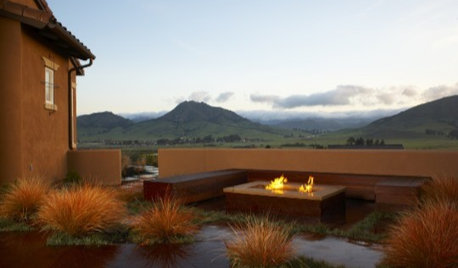
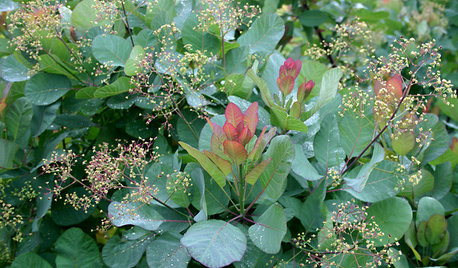
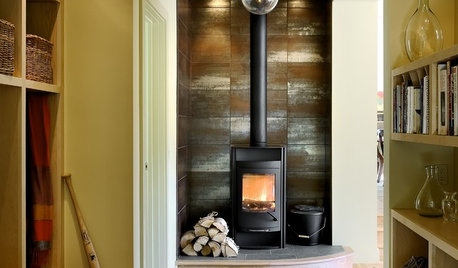

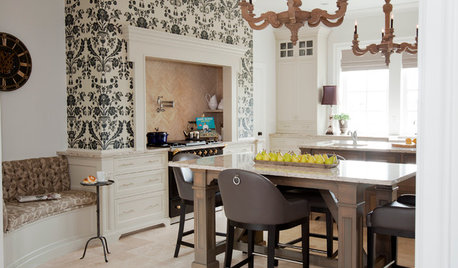
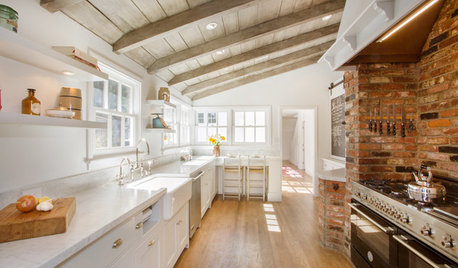
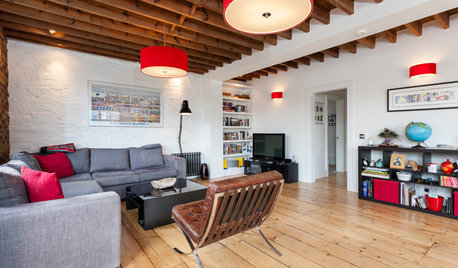
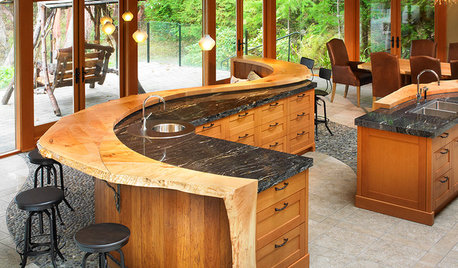







big_al_41